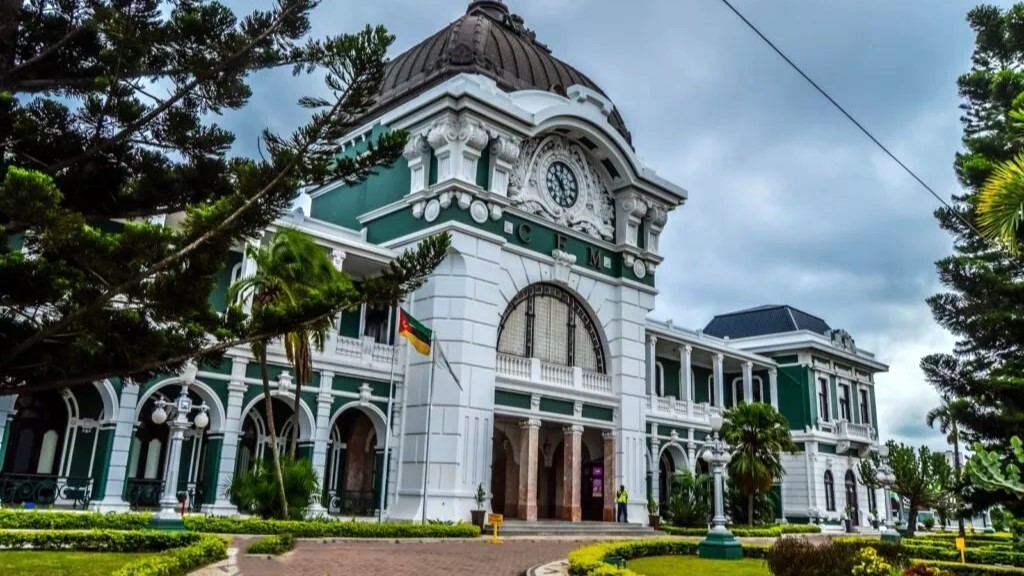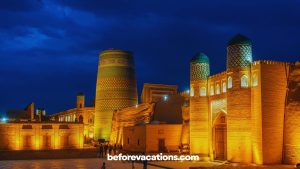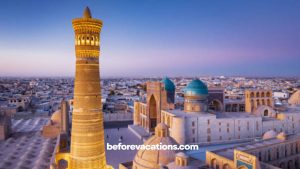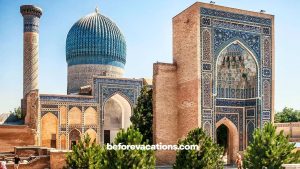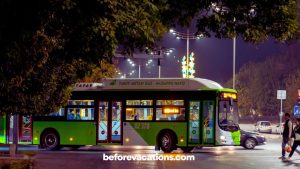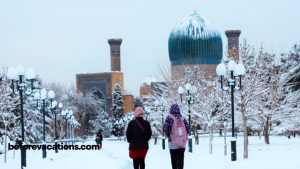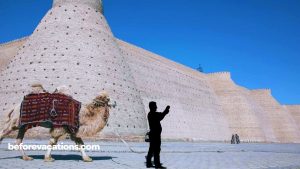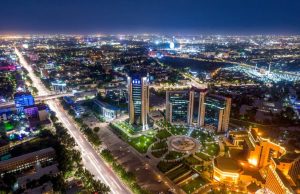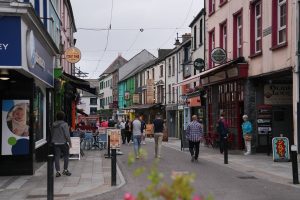Imagine a vibrant city where the rhythm of the Indian Ocean meets the pulsating energy of African creativity, all under a vast, open sky.
This is Maputo, Mozambique’s captivating capital, a city brimming with history, unique architecture, and a thriving arts scene. At the heart of this cultural landscape lies a true gem: the Museu Galeria Chissano Maputo. This isn’t just a museum; it’s a testament to the enduring spirit of Mozambican art, a celebration of one of its most influential figures, and a powerful window into the nation’s soul. For travelers seeking an authentic encounter with African artistic expression, the Chissano Gallery offers a profound and inspiring experience.
This comprehensive guide invites you to explore its unique collections, understand its significance, and see how it fits into your broader exploration of Maputo’s vibrant cultural tapestry. Prepare to be moved by the rich narratives and striking forms that define this extraordinary cultural institution.
Why Museu Galeria Chissano Maputo Is a Must-Visit
The Museu Galeria Chissano Maputo stands as a beacon of Mozambican artistic heritage. It celebrates the life and work of Alberto Chissano (1935-1994), one of Mozambique’s most renowned sculptors. Chissano’s work, often characterized by its powerful forms, raw emotion, and deep connection to Mozambican identity and history, continues to resonate deeply. The gallery, housed in his former home and studio, offers a uniquely intimate look into his creative process and the environment that shaped his genius.
Visitors encounter his distinctive sculptures, which frequently depict the human form, often in abstracted or symbolic ways, reflecting themes of struggle, hope, and freedom—themes deeply rooted in Mozambique’s colonial past and its journey to independence.
Visiting the museum provides a deeper understanding of Mozambique’s cultural narrative. It shows how artists like Chissano used their craft to reflect on society, convey messages of resilience, and contribute to national identity. Beyond Chissano’s own masterpieces, the gallery also often hosts works by other contemporary Mozambican artists.
This ensures a dynamic and evolving exhibition space. It fosters new talent and showcases the ongoing vibrancy of the local art scene. For anyone interested in African art, post-colonial history, or simply powerful artistic expression, the Museu Galeria Chissano Maputo offers an invaluable and moving experience that goes beyond mere sightseeing, providing insights into the very soul of Mozambique through its artistic lens.
A Glimpse into Genius: The Art and Legacy of Alberto Chissano
Alberto Chissano’s journey from a rural upbringing to becoming a celebrated international artist is a remarkable story. His art transcends mere aesthetics; it embodies a profound commentary on the human condition and the Mozambican experience. The Museu Galeria Chissano Maputo provides a dedicated space to appreciate this legacy.
The Sculptural Narrative of Alberto Chissano
Chissano was primarily a sculptor, working with various materials, most notably wood, but also stone and metal. His sculptures are immediately recognizable for their raw power and expressive forms. He often carved directly from large pieces of timber, letting the natural grain and shape of the wood guide his hands. This technique imbues his works with an organic quality, connecting them deeply to nature.
His themes often revolved around ancestral spirits, the struggles of the Mozambican people under colonialism, the liberation struggle, and the dreams of a newly independent nation. Pieces like “Mother and Child” or “The Prisoner” resonate with universal emotions of suffering, love, and hope, yet they are distinctively Mozambican in their aesthetic and narrative.
The sheer scale of some of his larger works can be imposing, yet they maintain a profound sense of humanity, inviting viewers to contemplate the deeper meanings embedded within the wood or stone. The gallery carefully curates these works, allowing visitors to trace the evolution of his artistic thought and technical mastery, from his earlier, more figurative pieces to his later, more abstract and symbolic expressions. Each sculpture tells a story, revealing layers of meaning that encourage introspection and connection.
Chissano’s Influence and the Gallery’s Role
Alberto Chissano’s influence extends far beyond his own prolific output. He was a mentor to many younger artists and a passionate advocate for Mozambican art. The very existence of the Museu Galeria Chissano Maputo in his former home is a testament to his vision and dedication. It serves not only as a static exhibition space but also often functions as a living institution, continuing to foster artistic dialogue and appreciation.
The gallery may host temporary exhibitions by emerging and established Mozambican artists, ensuring that Chissano’s legacy is one of continued growth and inspiration rather than just historical preservation. This dynamic approach makes the museum a vital part of Maputo’s contemporary art scene.
It acts as a bridge between past masters and future talents, ensuring that Mozambican voices continue to be heard and seen on both local and international stages. His legacy encourages new generations to explore their own identity through art, building upon the foundations he so powerfully laid.

Planning Your Visit to Museu Galeria Chissano Maputo
Visiting the Museu Galeria Chissano Maputo is a relatively straightforward experience, but a few tips can enhance your appreciation of this unique cultural site.
Location and Accessibility
The Museu Galeria Chissano Maputo is located in the suburb of Maringa (sometimes referred to as Matola-Rio, though it’s typically just a short drive from central Maputo). It sits somewhat outside the immediate city center, which means a dedicated trip is usually required.
- By Taxi: This is the most common and convenient way to reach the gallery from central Maputo hotels. Negotiate the fare beforehand, or use a ride-sharing app if available in Maputo.
- By Car: If you have a rental car, the gallery is accessible by road, and usually, there is parking available.
- Public Transport: While local minibuses (chapas) serve the area, navigating them without local knowledge might be challenging for first-time visitors. A taxi is generally recommended for ease.
What to Expect During Your Visit
The gallery is housed within Chissano’s former residence, which contributes to its intimate and personal atmosphere.
- Exhibition Space: Expect to see a significant collection of Alberto Chissano’s sculptures, displayed both indoors within the house and outdoors in the garden areas. The garden setting provides a unique backdrop for his powerful works, allowing natural light and surroundings to complement the art.
- Guidance: Often, family members or staff who knew Chissano are present. They can provide insightful explanations about his life, his works, and their historical context. Engaging with them offers a deeper connection to the art.
- Other Artists: As mentioned, the gallery may showcase works by other Mozambican artists. This offers a broader perspective on the country’s contemporary art scene.
- Photography: Inquire about photography rules upon arrival. Generally, photography for personal use is permitted, but it’s always respectful to ask first.
- Entry Fee: There is typically a modest entry fee, which contributes to the maintenance of the gallery and the promotion of Mozambican art.
Best Time to Visit
Maputo has a tropical climate. The best time to visit the city, and thus the gallery, is during the dry season (May to November). Temperatures are milder, and humidity is lower, making it more comfortable for exploring. Weekdays are generally quieter than weekends. Allow at least 1-2 hours to fully appreciate the collection and surroundings.
Beyond the Gallery: Maputo’s Broader Artistic and Cultural Landscape
Visiting the Museu Galeria Chissano Maputo is an excellent starting point for exploring Maputo’s rich cultural offerings. The city itself is a vibrant tapestry of influences, from its Portuguese colonial past to its robust African present, all reflected in its art, architecture, and daily life.
Maputo’s Architectural Gems and Historical Sites
Maputo’s streets are an open-air museum of fascinating architecture.
- Maputo Central Railway Station: Often cited as one of the world’s most beautiful train stations. This iconic copper-domed building, possibly designed by Gustave Eiffel’s associates, is a magnificent example of Beaux-Arts architecture. It’s an active station and a must-see.
- Iron House (Casa de Ferro): A pre-fabricated metal house designed by Gustave Eiffel. Its unique construction and history make it a curious landmark.
- Fortaleza de Maputo (Maputo Fortress): A historic Portuguese fort dating back to the 18th century. It offers insights into the city’s colonial past and provides panoramic views of the bay.
- Jardim Tunduru (Tunduru Botanical Gardens): A tranquil Victorian-style botanical garden offering a green respite in the city center. It’s perfect for a leisurely stroll.
- Praça da Independência (Independence Square): The grand central square, flanked by important buildings like the City Hall, Cathedral, and the statue of Samora Machel. It is a central point for understanding the city’s political history.
The Pulse of Maputo’s Art Scene and Markets
Maputo’s artistic spirit extends beyond formal galleries into its streets and markets.
- FEIMA (Feira de Artesanato, Flores e Gastronomia): This vibrant arts and crafts market is a fantastic place to find traditional Mozambican sculptures, paintings, textiles, and jewelry. It’s an excellent spot to interact with local artists and purchase unique souvenirs. You might even find artists who were influenced by Chissano’s legacy.
- National Art Museum (Museu Nacional de Arte): Another important institution in Maputo, offering a broader collection of Mozambican art, from traditional to contemporary. It complements the specialized focus of the Chissano Gallery.
- Coconuts Arts and Crafts Market: Another lively market, often featuring unique handcrafted items and local art, reflecting the diverse creative talents of the region.
- Street Art: Keep an eye out for vibrant murals and graffiti art throughout the city, reflecting social commentary and artistic expression.
Savoring Maputo’s Flavors: A Culinary Journey
Maputo’s cuisine reflects its coastal location and diverse influences, particularly Portuguese.
- Piri-Piri Prawns: A signature dish! Fresh prawns grilled and smothered in a fiery piri-piri sauce. Numerous restaurants specialize in this.
- Fresh Seafood: Enjoy incredibly fresh fish, crab, and other seafood, often grilled simply with lemon and garlic. The fish market offers a chance to pick your own catch and have it cooked on the spot.
- Matapa: A traditional Mozambican dish made from cassava leaves, ground peanuts, and coconut milk, often served with rice or seafood.
- Local Beers: Sample popular Mozambican beers like 2M (Mac-Mahon) or Laurentina.
- Tropical Fruits: Enjoy an abundance of fresh, juicy tropical fruits like mangoes, papayas, and pineapples.
Practical Tips for Your Maputo Adventure
To ensure your visit to Maputo and the Museu Galeria Chissano Maputo is smooth and enriching, consider these practical tips.
Getting Around Maputo
- Taxis: Readily available in the city center. Negotiate fares before starting your journey, or use ride-sharing apps if they are active in Maputo.
- Chapas (Minibuses): The most common form of local public transport, but they can be crowded and navigating routes requires local knowledge.
- Walking: Maputo’s city center is quite walkable, allowing you to explore many architectural gems and markets on foot.
- Car Rental: Possible but not always recommended for navigating the city’s traffic. Taxis are usually more convenient for visitors.
Safety and General Advice
- Safety: Maputo, like any major city, requires awareness. Exercise caution, especially at night. Avoid walking alone in poorly lit areas. Keep valuables out of sight.
- Currency: The local currency is the Mozambican Metical (MZN). While major hotels and some restaurants accept credit cards, cash is often preferred, especially for markets and smaller establishments.
- Language: Portuguese is the official language. Basic English is spoken in major tourist areas, but learning a few Portuguese phrases will be helpful and appreciated.
- Connectivity: Wi-Fi is available in hotels and some cafes. Consider a local SIM card for reliable mobile data.
- Health: Consult your doctor about necessary vaccinations (e.g., Yellow Fever, Typhoid) and malaria prophylaxis before traveling to Mozambique.
- Customs: Mozambicans are generally friendly and welcoming. Politeness and respect for local customs (e.g., dressing modestly in certain areas) are appreciated.
Your Artistic Journey in Maputo Awaits!
The Museu Galeria Chissano Maputo offers more than just an art exhibition; it provides a profound insight into the cultural soul of Mozambique. It’s a place where history, art, and identity converge, presented through the powerful lens of Alberto Chissano’s remarkable work. By incorporating a visit to this pivotal gallery into your exploration of Maputo’s vibrant markets, architectural wonders, and delicious culinary scene, you will craft a travel experience that is both artistically enriching and deeply authentic. This guide has equipped you with the insights to navigate Maputo, discover its artistic heart, and truly appreciate its unique place on the African continent.
Ready to connect with the vibrant spirit of Mozambican art? Start planning your cultural adventure to Maputo and experience the profound beauty of Museu Galeria Chissano!

